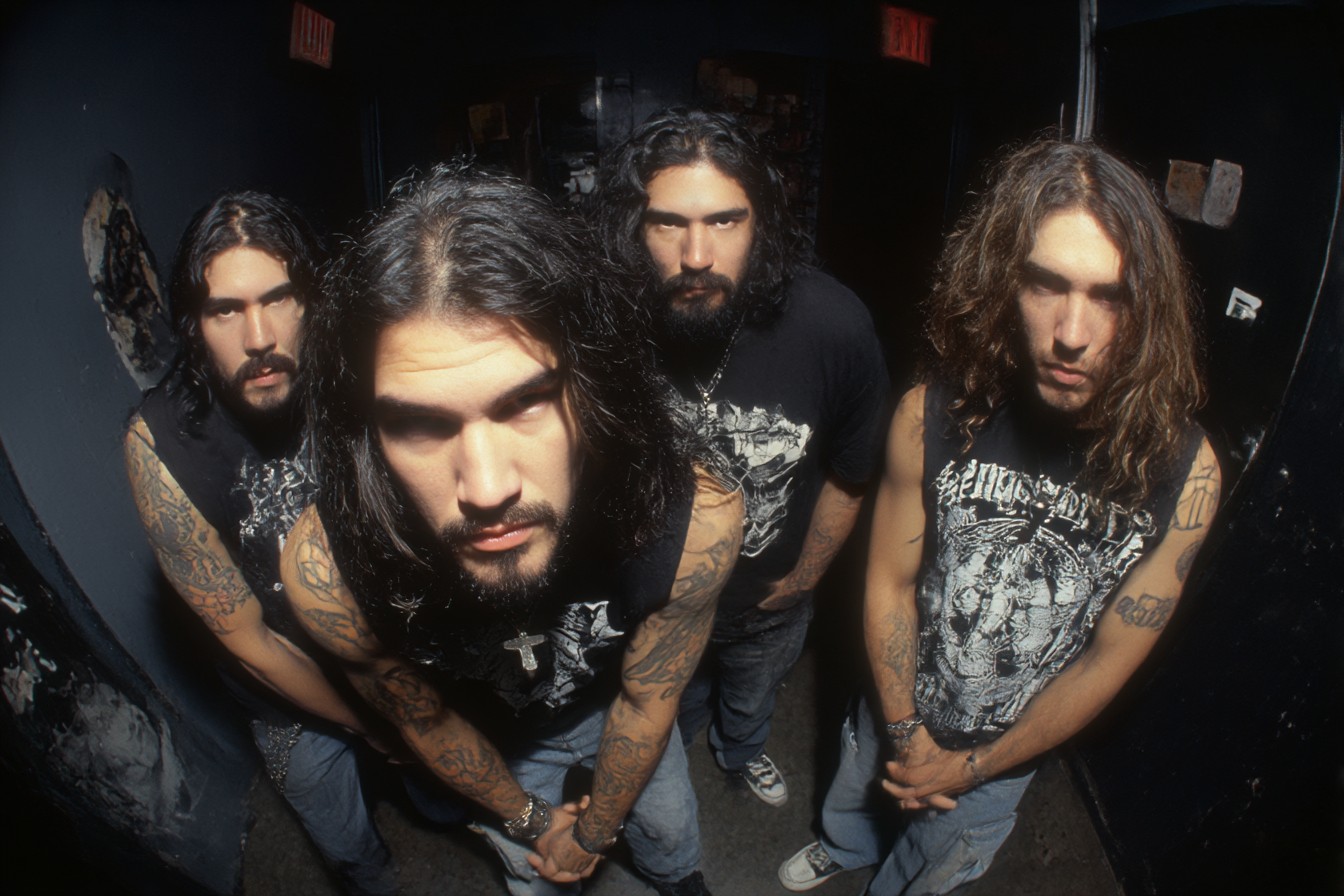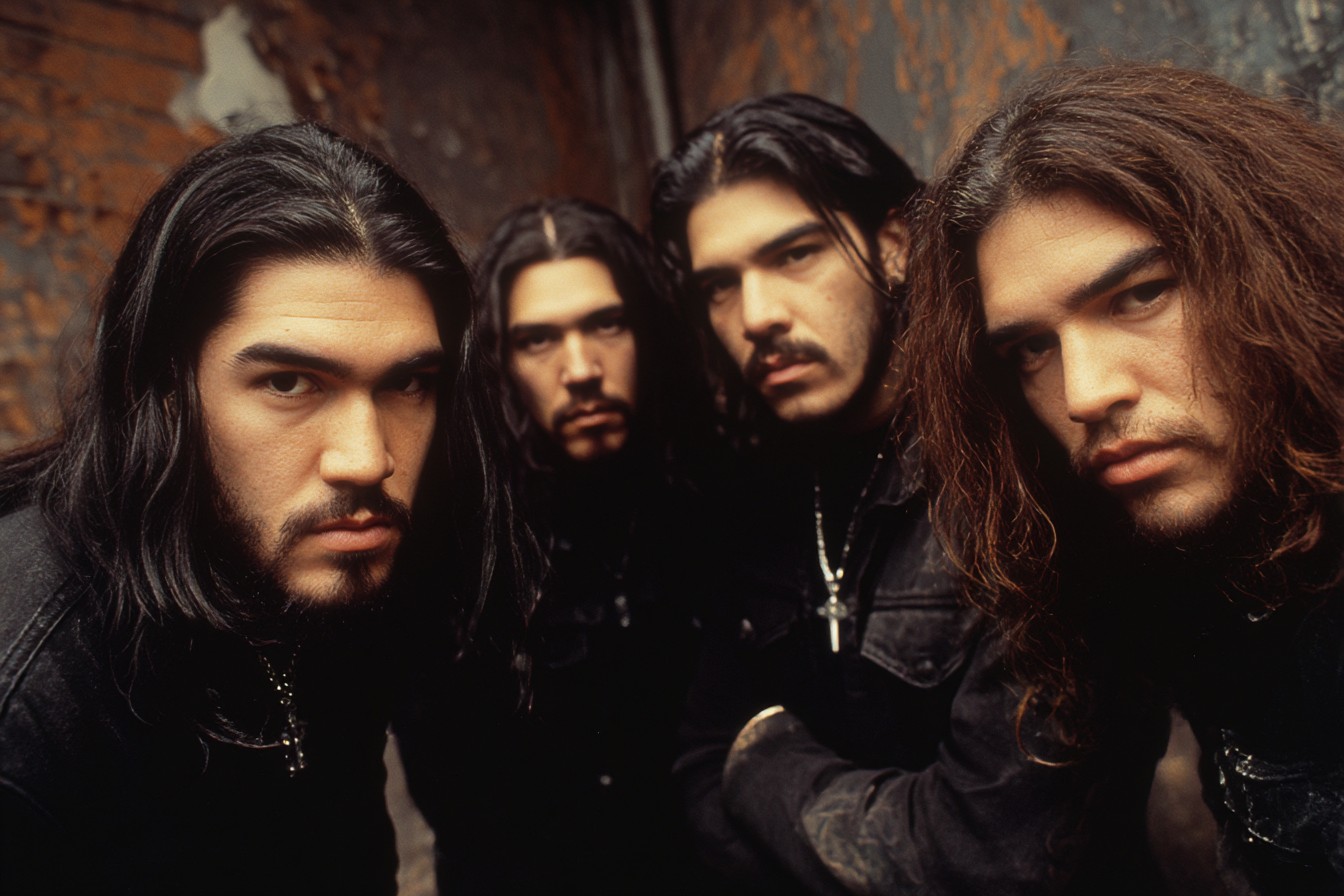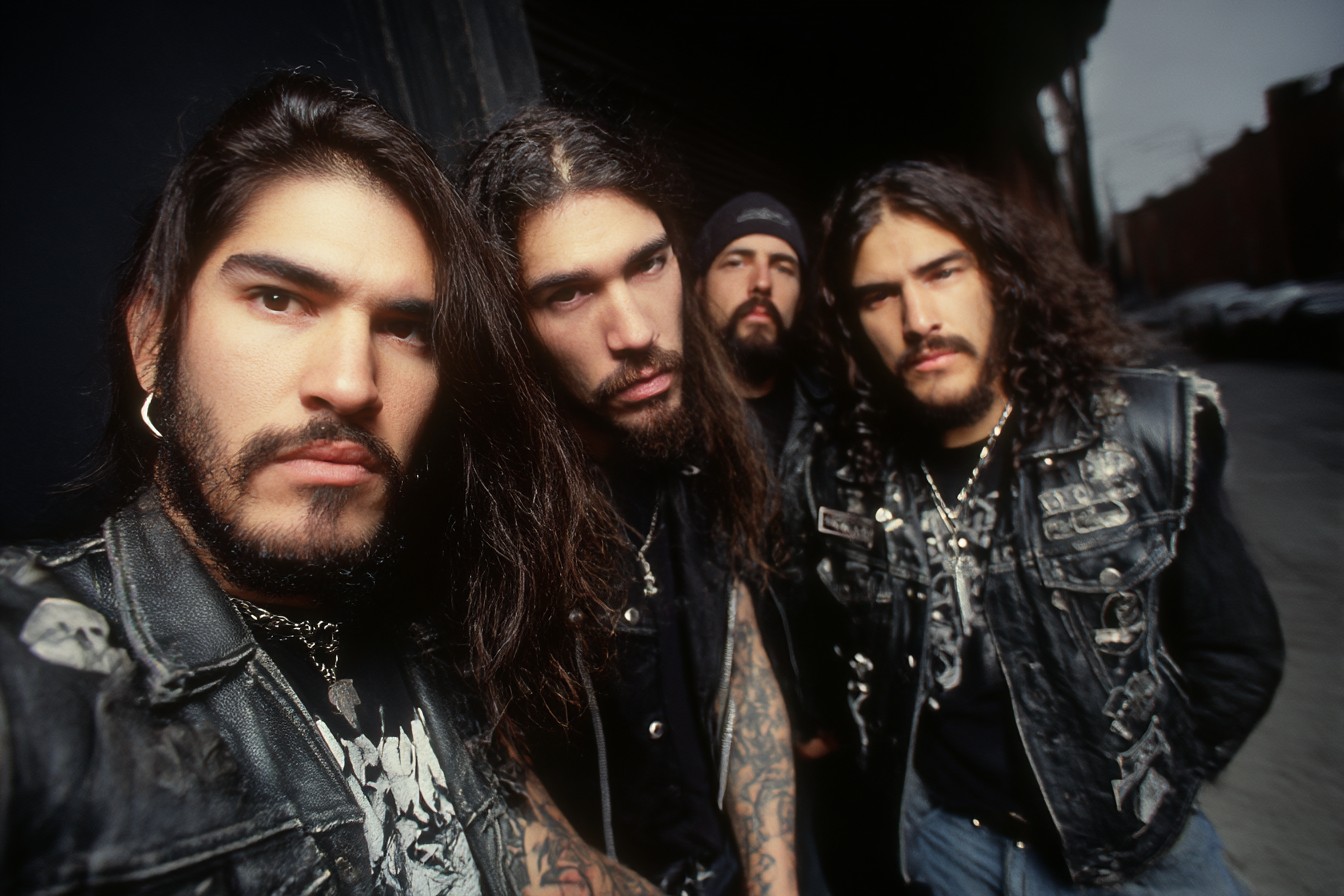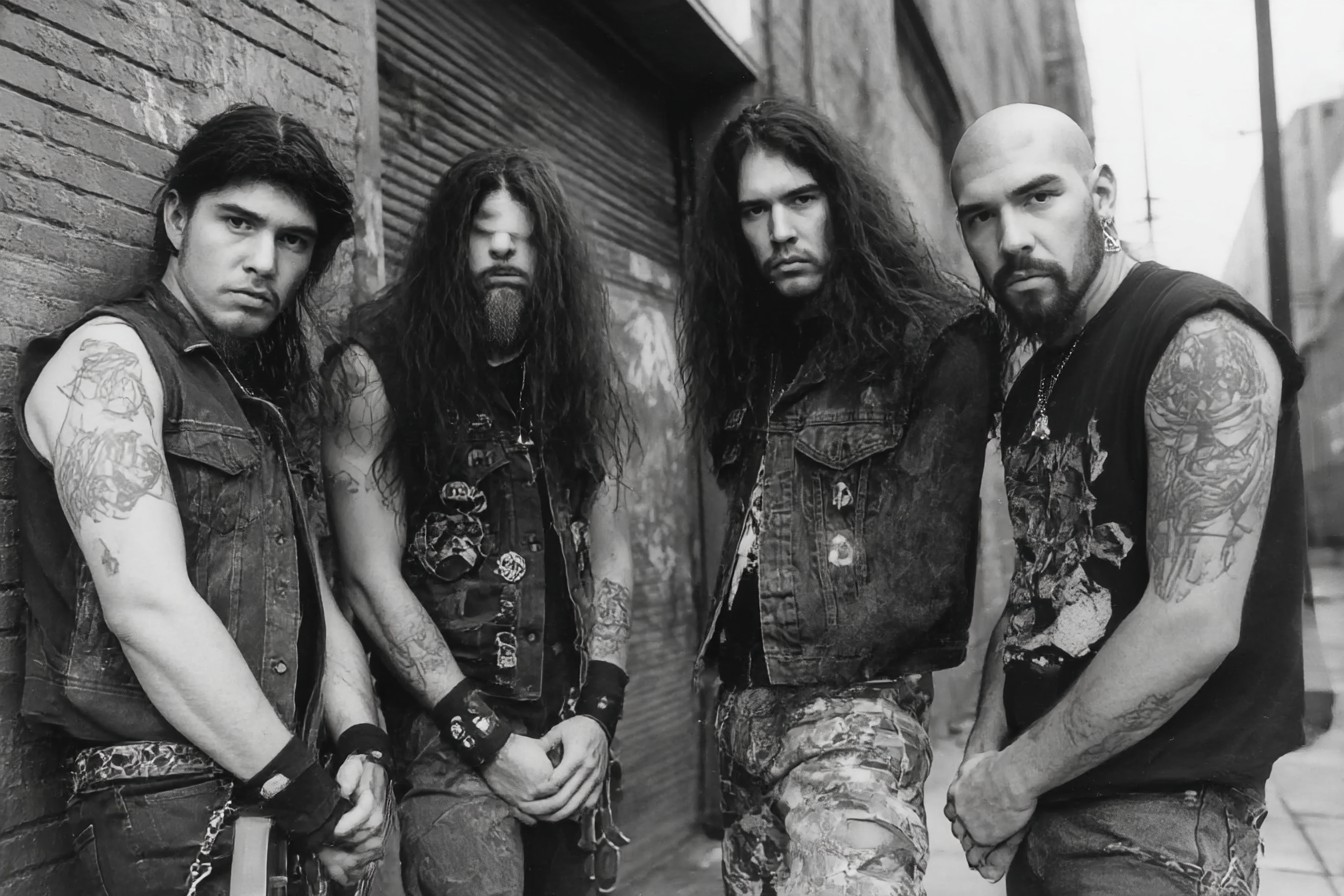I remember exactly where I was when I first heard Machine Head’s “Burn My Eyes.” Summer of ’94, crammed into my friend Dave’s Nissan Sentra with the perpetually overheating problem, somewhere on the outskirts of Oakland. We’d just left a disappointingly tepid show (I won’t name names, but let’s just say a certain thrash band was clearly going through the motions that night), and Dave popped in this cassette he’d been raving about for weeks.
“Just listen,” he said, cranking the volume to levels his factory speakers definitely weren’t designed to handle. The opening acoustic guitar of “Davidian” lulled me into a false sense of security for approximately 30 seconds before the absolutely monstrous riff kicked in, and Robb Flynn’s voice—part scream, part melodic snarl—cut through the mix like a chainsaw through butter.
By the first chorus, I was sitting up straight, that electric feeling you get when you recognize you’re hearing something genuinely new yet somehow familiar crawling up my spine. By the song’s end, I was interrogating Dave about everything he knew about this band. “The guy was in Vio-lence,” he said, as if that explained everything. And in a way, it did.
Context matters when we talk about “Burn My Eyes,” and the context of 1994 was bleak if you were a metal fan. Grunge had been the asteroid to metal’s dinosaurs, and the aftermath wasn’t pretty. Magazines that had once featured Metallica or Megadeth on every other cover were now all about flannel and angst. Major labels were dropping metal bands faster than they could say “alternative rock.” The bands that did survive were busy reinventing themselves—some convincingly, others… well, let’s just say there were some questionable haircuts and experimental albums happening.
And in the middle of this metal ice age, here comes Machine Head with an album that was unapologetically aggressive, technically impressive, and—crucially—modern without pandering to trends. “Burn My Eyes” wasn’t thrash metal trying to weather the storm; it was the next evolutionary step, incorporating elements of groove, hardcore, and even industrial textures without sacrificing an ounce of heaviness.
The album felt like it was made by guys who’d absorbed the previous decade of metal but weren’t interested in simply recreating it. There’s thrash in Machine Head’s DNA, absolutely, but “Burn My Eyes” wasn’t trying to be “Bonded By Blood” or “Reign in Blood.” The grooves were deeper, the production more crushing, and Flynn’s vocals had this raw authenticity that connected even when he was at his most aggressive.
I ran into Logan Mader years later at a festival—this was probably around 2006 or so—and couldn’t help but geek out about his guitar tone on that record. “Man, we were just trying to sound as huge as possible with practically no budget,” he told me. “Colin [Richardson] was the secret weapon. He understood what we were going for right away.” That production job deserves its own article, honestly—the way Richardson captured the band’s live intensity while giving each element room to breathe was nothing short of masterful, especially for the era.
What struck me most about “Burn My Eyes” then (and still does now) was its absolute conviction. This wasn’t a band hedging its bets or trying to slip in some radio-friendly unit shifters among the heavy stuff. This was metal made by lifers, guys who weren’t going anywhere no matter what the current trends dictated. There’s something almost defiant about dropping an album this aggressively metal in 1994, like showing up to a funeral wearing a Hawaiian shirt and sunglasses.
The record’s backbone is that mechanical, precisely calibrated rhythm section. Chris Kontos’ drumming deserves special mention here—the guy was playing with this combination of technical precision and raw punk energy that perfectly complemented Adam Duce’s grinding bass lines. Just listen to the verse of “Old”—that lock-step groove is so tight it borders on industrial, but it never feels mechanical or sterile. There’s human sweat all over those performances.
And Flynn… man. His evolution from Vio-lence to Machine Head is one of metal’s most interesting career arcs. In Vio-lence, he was part of this Bay Area thrash collective, playing blistering, technical riffs but not necessarily standing out as a distinctive voice. On “Burn My Eyes,” he emerged fully formed as both a songwriter and a frontman, bringing this intense personal perspective to tracks like “A Thousand Lies” and “The Rage to Overcome.”
I interviewed him around 2007 for a retrospective piece, and he told me something that stuck with me. “We made ‘Burn My Eyes’ like it was gonna be the only album we ever got to make,” he said. “There was no calculation, no thought about what comes next. It was just pure fucking expression of who we were at that moment.” That desperation, that urgency—it bleeds through every track.
The record’s relationship with its time and place adds another dimension worth mentioning. This wasn’t just metal made in a vacuum; this was Oakland 1994, with all the social tension, economic anxiety, and urban decay that implied. You can hear it in tracks like “Real Eyes, Realize, Real Lies” (admittedly not the most subtle wordplay, but the sentiment lands) and “A Nation on Fire,” which directly references the L.A. riots. This wasn’t escapist fantasy or occult imagery—Machine Head was processing the actual world around them, bringing a street-level perspective that gave their heaviness a different kind of weight.
I’ve got this vivid memory of seeing them on the “Burn My Eyes” tour at a club in San Francisco that definitely exceeded its capacity that night. The crowd was this bizarre mix of old-school thrashers, hardcore kids, and even some industrial fans who’d somehow caught wind that this was something different. By the third song, the place had turned into a sweat-soaked, circle-pit chaos that didn’t let up for the entire set. What struck me was how the material translated live—sometimes albums this precisely produced lose something in the live setting, but Machine Head somehow sounded even more massive on stage.
The legacy of “Burn My Eyes” is complicated in some ways. Machine Head themselves have had a career of dramatic reinventions and stylistic shifts—some brilliant (“The Blackening”), some… less so (we all have our opinions about the nu-metal flirtation era). But that debut stands as this perfect moment in time, a record that both honored metal’s past while helping to secure its future at a moment when nothing seemed certain.
I still play “Burn My Eyes” start to finish at least a couple times a year, usually when I’m feeling particularly nostalgic for that period of musical discovery or when I need a reminder of what uncompromising artistic vision sounds like. It’s aged remarkably well—unlike some ’90s metal that sounds painfully dated now, “Burn My Eyes” still hits with the same impact it did when Dave’s cassette deck first blasted it through those poor abused car speakers.
What’s funny is how many people retroactively claim to have been into Machine Head from day one. It’s like how everybody supposedly saw the Sex Pistols at the Lesser Free Trade Hall, or how every New Yorker was at CBGB for the Ramones’ early shows. But in reality, “Burn My Eyes” was a slow burn (no pun intended… okay, maybe slightly intended). It didn’t exactly set the charts on fire upon release, but through relentless touring and pure word-of-mouth, it created this devoted following that’s only grown over the decades.
The last time I saw Machine Head live was a “Burn My Eyes” anniversary show where they played the album in its entirety. I found myself standing next to this kid who couldn’t have been more than 19, wearing a meticulously distressed vintage-looking Machine Head shirt that I’m pretty sure was manufactured to appear old. Between songs, he turned to me and said, “I was born nine years after this album came out, but it’s still the heaviest thing I’ve ever heard.” I couldn’t help but smile—both at making yet another “I’m ancient” realization, and at the confirmation that great music really is timeless.
“Burn My Eyes” didn’t save metal single-handedly—no one album could—but it was a crucial flag planted at a moment when the genre’s future seemed uncertain. It proved that you could evolve beyond thrash without sacrificing heaviness, that you could incorporate new elements while maintaining metal’s essential power. In a musical landscape dominated by flannel shirts and downcast gazes, Machine Head reminded everyone that the primal catharsis of properly executed heaviness would never go out of style.
And nearly three decades later, that reminder still hits just as hard.




Leave a Reply